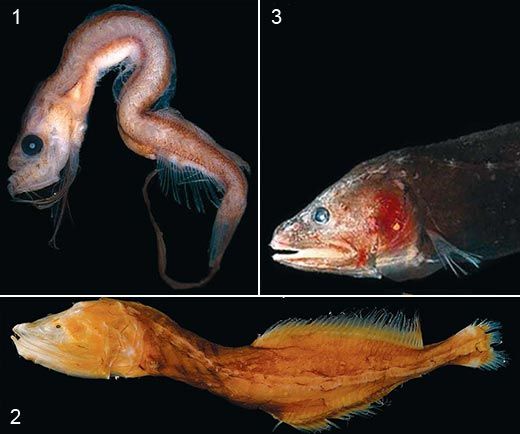A Fish Tale
A curator discovers that whalefishes, bignose fishes and tapetails are all really the same kind of fish at different life stages
/https://tf-cmsv2-smithsonianmag-media.s3.amazonaws.com/filer/junior-tapetail-631.jpg)
Appearances can be deceiving. For decades, scientists thought that whalefishes, bignose fishes and tapetails came from three different families of fish. But G. David Johnson, a curator at the National Museum of Natural History, recently proved that all three are the same kind of fish at different life stages—a finding comparable to finding out that a baby gerbil will grow up to become either a squirrel or a chipmunk. (It won't.)
The transformation of a juvenile tapetail into an adult bignose fish or whalefish demonstrates one of the most extreme examples of metamorphosis in vertebrates. To become a bignose, a tapetail's upper jawbones fuse to its nasal bone, it loses its stomach and esophagus and lives off its liver.
Johnson's research relied on the capture of a female in the midst of metamorphosis, comparative anatomical studies and DNA analyses. The discovery also explains why past researchers had found only female whalefishes and male bignose fishes. The "missing" males and females were not missing at all. They were two very different-looking sexes of the same fish. The answer was right there all along—or, as Johnson puts it, "Well, duh!"
/https://tf-cmsv2-smithsonianmag-media.s3.amazonaws.com/accounts/headshot/joseph-caputo-240.jpg)


/https://tf-cmsv2-smithsonianmag-media.s3.amazonaws.com/accounts/headshot/joseph-caputo-240.jpg)